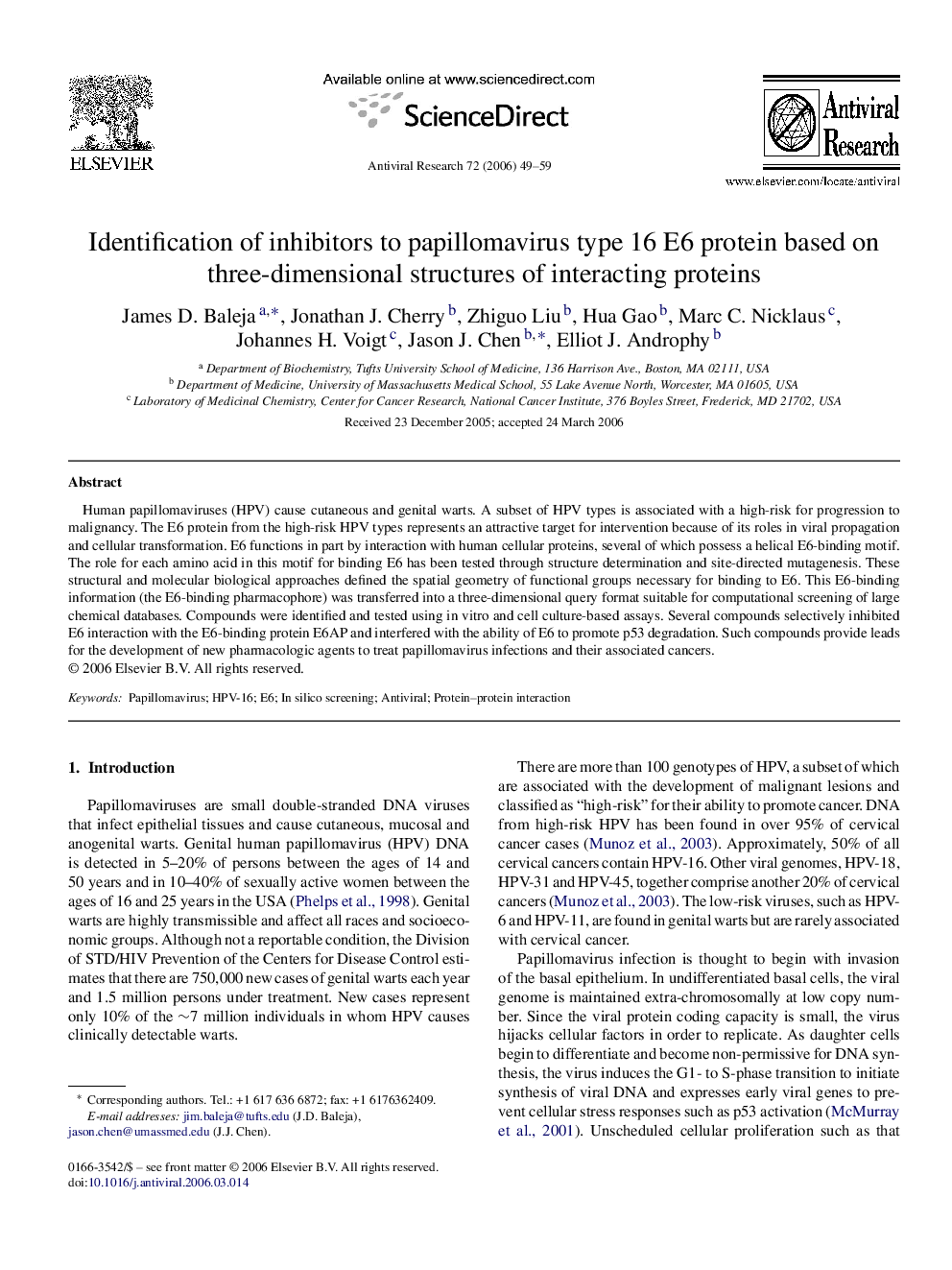| Article ID | Journal | Published Year | Pages | File Type |
|---|---|---|---|---|
| 2511599 | Antiviral Research | 2006 | 11 Pages |
Human papillomaviruses (HPV) cause cutaneous and genital warts. A subset of HPV types is associated with a high-risk for progression to malignancy. The E6 protein from the high-risk HPV types represents an attractive target for intervention because of its roles in viral propagation and cellular transformation. E6 functions in part by interaction with human cellular proteins, several of which possess a helical E6-binding motif. The role for each amino acid in this motif for binding E6 has been tested through structure determination and site-directed mutagenesis. These structural and molecular biological approaches defined the spatial geometry of functional groups necessary for binding to E6. This E6-binding information (the E6-binding pharmacophore) was transferred into a three-dimensional query format suitable for computational screening of large chemical databases. Compounds were identified and tested using in vitro and cell culture-based assays. Several compounds selectively inhibited E6 interaction with the E6-binding protein E6AP and interfered with the ability of E6 to promote p53 degradation. Such compounds provide leads for the development of new pharmacologic agents to treat papillomavirus infections and their associated cancers.
